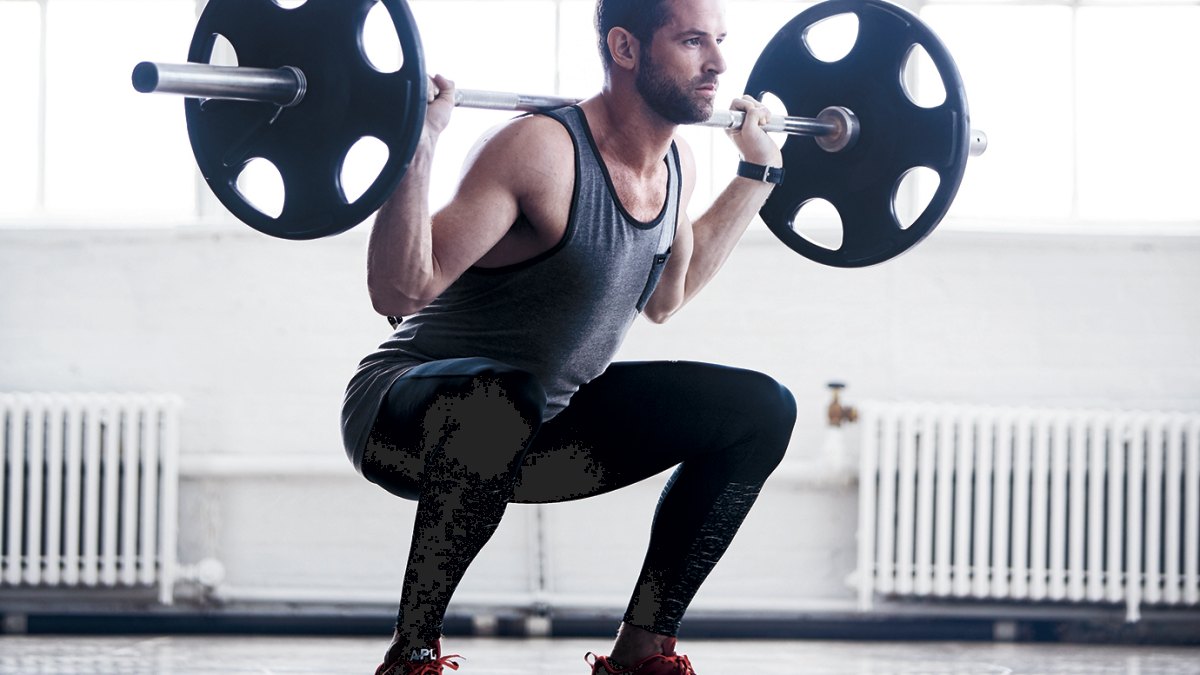8 factors on which training loads depend
This article introduces the 8 factors on which the loads in strength training depend and their relationship with the age of the trained subject. Once the appropriate exercises have been chosen, the effectiveness of a training load depends on the degree of effort it represents.
In this series of articles we deal with some of the most important concepts of strength training, collecting notes from the recently published book Strength, Speed and Physical and Sports Performance written by renowned researchers Juan José González Badillo and Juan Ribas Serna.
Whether the degree of effort is too far away, or if the maximum limits of the subject’s current performance capacity are repeatedly worked on, positive adaptation does not occur. Therefore, the degree of fatigue that is generated in each session is what is programmed and the effect of the training depends on.
Whatever the subject’s capacity or genetic endowment for sports physical performance during a training cycle, there are only limited possibilities for adaptation or improvement in the development of strength. This margin of improvement, as well as the period in which this capacity for improvement is exhausted, varies depending on different factors that are mostly related to each other.
The margin of improvement, as well as the period in which this capacity for improvement is exhausted, varies depending on different factors that are mostly related to each other.
Of these, the following factors could be highlighted:
Factor 1: Age of the subject.
The younger the athlete, the longer the continuous improvement (positive adaptation) time can be extended in a cycle. However, it would not be advisable to continuously prolong the progression of loads beyond 16-18 weeks, without a recovery phase.
Conversely, older (older) athletes have less room for improvement, training should be more stressful, and cycle lengths should not be longer than 12 weeks, although shorter cycles may also suffice.

If, after completing a training cycle, the time remaining until the competition or cycle of important competitions is approximately 6 to 12 weeks, what is appropriate in these cases is to start a new cycle or process of performance improvement, with the necessary adjustments in the training variables based on the loads carried out in the previous cycle and the specific time remaining until the competition.
it would not be advisable to continuously prolong the progression of the loads beyond 16-18 weeks
The reasons why younger and, normally, less trained subjects can and should extend their training cycles longer and more advanced ones reduce them are the following:
factor 2: The progression of the loads.
Since the loads carried out by the youngsters up to now and the strength development achieved are still very small in relation to the performance capacity of the subject or genetic adaptive potential (GAP), the stimuli needed to improve may also be small, and not only in absolute terms, but, above all, in relative terms.
A stimulus is small both because of the relative intensity (% 1RM or speed of the first repetition in the series) maximum that is used and because of the speed with which the intensity rises over time. If the stimulus is effective by progressing the relative intensity more slowly or even with stable relative intensities or, in a more favorable situation, reducing the relative intensity, this means that in these stages the increase or progression in the absolute load is sufficient to improve the performance. performance despite the fact that the relative intensity is stable or even tends to decrease during the training cycle.
This type of progression should continue for as long as it is effective. Normally, this trend of relative intensity ceases to be effective when the subject has already advanced significantly in the development of strength, so it would probably be less applicable to advanced athletes. In these cases, if it is observed that it does not there is progression with this trend, the relative intensity should be increased. As performance improves, the range of stimuli needed to produce improvement becomes less and less because the training potential of most of them has been depleted as years of training have passed.
This means that the magnitude of the stimuli must be greater each time, which requires that they be used for less time and with a faster progression within the cycle. A faster progression takes less time to the highest loads. If high loads are maintained for a long time, the risk of excessive overload and overtraining increases. Therefore, cycles that have the potential to improve performance should be shorter.

Factor 3: The intensity and the global maximum load used.
Youngsters can improve their results within a few weeks of starting a training cycle. Therefore, the stimulus in absolute terms can be increased by maintaining almost stable relative intensities and even reducing them, because the reference values (1RM or execution speed for the same absolute load) improve.
This allows that without great efforts, or even with progressively decreasing efforts, an almost constant increase in performance can be maintained. The lower the load (as volume and intensity synthesis), the longer it can be endured without excessive fatigue. The opposite occurs in the case of highly trained subjects and, generally, older ones: the relative intensity must be high (within the limits of each sport specialty) and the global load must also be high. In this situation, the cycles cannot be very long, due to the same overload risks indicated above.
in the case of highly trained and generally older subjects: the relative intensity must be high
Factor 4: Time spent on strength training so far.
The considerations would be similar to those proposed with respect to age. The youngest would be in the same situation as in the previous case, since, generally, both circumstances would occur: being young and having no experience in strength training. Older subjects, but without experience, would have the possibility of maintaining an improvement in longer cycles and with lower loads than in those of the same age who already have experience in this type of training.
Factor 5: Level of strength development achieved to date.
The margin for performance improvement is mainly related to two factors: a) the time dedicated to strength training and b) the PAG of the subject.
The greater the margin for improvement, the longer the cycle can be prolonged, since the improvement can be maintained for longer. As this decreases, the more intense and specific the training must be and the shorter the time that the load can be supported to achieve an improvement.
The margin for performance improvement is mainly related to two factors: a) the time dedicated to strength training and b) the PAG of the subject.
In the latter case, a good part of the training is dedicated to maintaining a high level of force development achieved up to now, and in relatively short phases, stimuli of the maximum demand typical of the specialty are applied to try to exceed performance.
factor 6: Training frequency.
The higher the training frequency, within limits, the greater the progress in strength, but the shorter the duration of the cycle, or the length of time an improvement in performance can be sustained. Generally, if the training frequency is low, the opposite will happen: slower, but more sustained progression.
However, this assumption would not be valid for subjects who are very advanced in strength training, who are hardly going to improve anything if they noticeably reduce the frequency of training to which they are accustomed. On the other hand, in these cases, the reduction in frequency could serve to maintain the strength level achieved in highly trained subjects for a few weeks.
It would also be useful when we had such a short period of time until the next competition that it was not possible to do two complete training cycles, but too long to do just one. In this case, the cycle starts with a lighter load than usual in order to extend it for a longer time, and one of its characteristics would be the reduction of the training frequency, in order to increase it in a later phase.
factor 7: The intensification of training.
If the relative maximum intensity (first repetition rate or %1RM) with which each exercise is worked is increased rapidly, the useful training cycle will be shorter than if the progression is smoother. If it is not necessary to exhaust the margins of the lowest intensities, because the length of the available cycle or the high level of training of the subject so requires, it is necessary to quickly reach the highest intensities.
All this leads to a necessary reduction of the cycle length. However, we must take into account that the rapid intensification of loads must be done with caution and not very frequently, since it is considered that one of the most frequent errors related to overtraining is precisely the rapid increase in loads (Kraemer and Nindl, 1998).
rapid intensification of loads should be done cautiously and not too frequently

factor 8: Training potential and variability of the exercises used during the cycle.
As long as an exercise maintains its training potential, the duration of its effectiveness within a cycle will be tied to the frequency and intensity with which it is trained. When it loses potential in itself, it should not be used.
Exercise variability can prolong or maintain improvement, but it is easy to find truly powerful or effective exercises to substitute for specific ones when levels of force development need to be very high, it is not necessary to approach the subject’s PAG in terms of the development of strength, the more likely to find alternative exercises that can improve or maintain results achieved so far.



